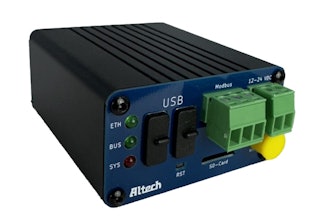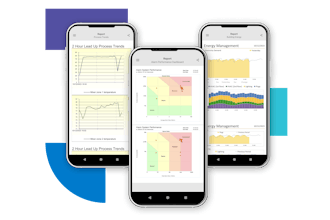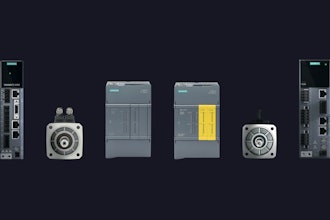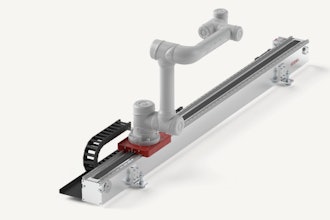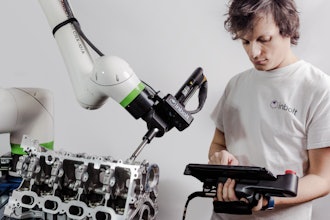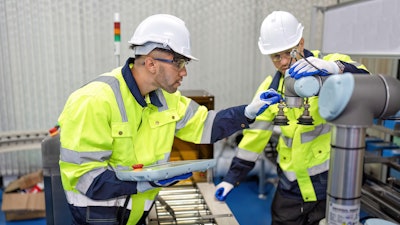
Based on a study conducted by the Manufacturing Institute and Deloitte, it is projected that by 2030, the manufacturing skills gap could lead to approximately 2.1 million unfilled jobs in the U.S. For over a decade, the manufacturing industry has struggled to find qualified workers and without education and intervention, this shortfall will persist.
This is of national importance because nearly one-quarter of U.S. GDP is impacted (directly and indirectly) by the manufacturing sector. Innovations in the manufacturing sector are closely linked to U.S. economic growth. With new opportunities in robotics, automation and AI, it is more important than ever to draw in manufacturing candidates with strong interests in science, technology, engineering and math (STEM) to engage in research and development, as well as advanced manufacturing technology adoption. Here are four ways to begin to make this happen:
1. Establish advanced manufacturing ecosystems
One of the keys to getting people interested in manufacturing and training skilled workers is creating advanced manufacturing ecosystems. These ecosystems involve both the public and private sectors working together to introduce people of all ages to manufacturing careers while at the same time providing current workers with access to training opportunities in advanced manufacturing, robotics, automation and AI. This kind of teamwork can empower the next generation to become the skilled workforce that the U.S. needs to stay competitive on the global stage.
2. Take a holistic view of education
Another vital aspect in generating interest in the manufacturing sector is offering educational opportunities that address the various aspects of manufacturing for all ages, with a focus on under-represented groups. These programs can range from school partnerships to summer camps, internships, apprenticeships and fellowships. For instance, MxD, (Manufacturing x Digital) equips U.S. manufacturers with digital tools, cybersecurity resources and workforce expertise. MxD’s workforce development program, MxD Learn, is helping to build manufacturing talent starting as early as high school, while its Virtual Training Center is a first of its kind resource for recruiting and training. Targeting students from kindergarten to college and even mid-career professionals is an effective methodology for maintaining a steady stream of interest in STEM-related manufacturing skills and careers.
3. Emphasize experiential learning
Traditional education alone is no longer enough. What is learned in the classroom can quickly become outdated and advanced manufacturing demands up-to-date, hands-on experience with software, equipment and machinery. Apprenticeships offer the experiential learning that individuals need, creating highly engaged prospective employees, especially if permanent positions are offered.
These programs should be competency-based rather than time-based. Competency-focused programs afford a personalized curriculum tailored to specific skill sets. They also yield heightened engagement, as students invest the time required to attain proficiency in a given subject. This approach broadens the pool of participants, particularly among underserved communities.
4. Change perceptions of industry
The next generation of workers wants to make a difference and have an impact on the world. By presenting the tangible, real-world benefits of careers in advanced manufacturing and how they can effect substantial change, more young professionals will be attracted to participating in a new wave of innovation.
Attracting the right manufacturing professionals therefore involves changing the way people view the industry. This can start by providing them with a hands-on look at this dynamic field and showing the many ways to build a successful career. Telling success stories about personal and financial success that is rooted in the technical, engineering and manufacturing domains can make this sector increasingly appealing to the younger generation, leading more to pursue STEM degrees. Increased investments in community colleges, workplace training programs and collaborative initiatives with state and local governments aimed at cultivating skills that are in demand among employers can make the connection between general technical skills and what is needed on the shop floor.
A big-picture approach to skills development
This persistent challenge of filling advanced manufacturing positions with skilled labor necessitates the development and training of a qualified workforce. This will, in turn, enable growth within the advanced manufacturing sector and bolster U.S. global competitiveness. Collaboration among universities, community colleges, private sector enterprises, non-profit organizations, educational groups, state and local governments and even youth and community organizations to manifest the approaches noted above will be key to attracting and training the future workers who can mitigate the skills gap that has persisted in the manufacturing sector.
---
Lizabeth Stuck is the Vice President of MxD Learn, the workforce development program at MxD. She is responsible for the development and execution of MxD’s workforce programming and strategies for increasing digital manufacturing and cybersecurity for manufacturing skill sets. She works with industry, academia, government and non-profit organizations to define and develop workforce solutions to manufacturing’s most pressing skills challenges.
Prior to joining MxD in 2015, Lizabeth was the Deputy Director of the Office of Advisory Committees at the U.S. Department of Commerce. In this role she led the United States Manufacturing Council, working with dozens of manufacturing industry leaders to address the country's most critical manufacturing workforce and technology challenges. Lizabeth has also held roles as a presidential appointee at the U.S. Department of Energy, the White House Office of Management and Budget and the White House Office of Legislative Affairs under the Obama Administration.
Lizabeth holds an MBA in Strategic Leadership and Change Management from DePaul University and a BA in Journalism from Indiana University.














